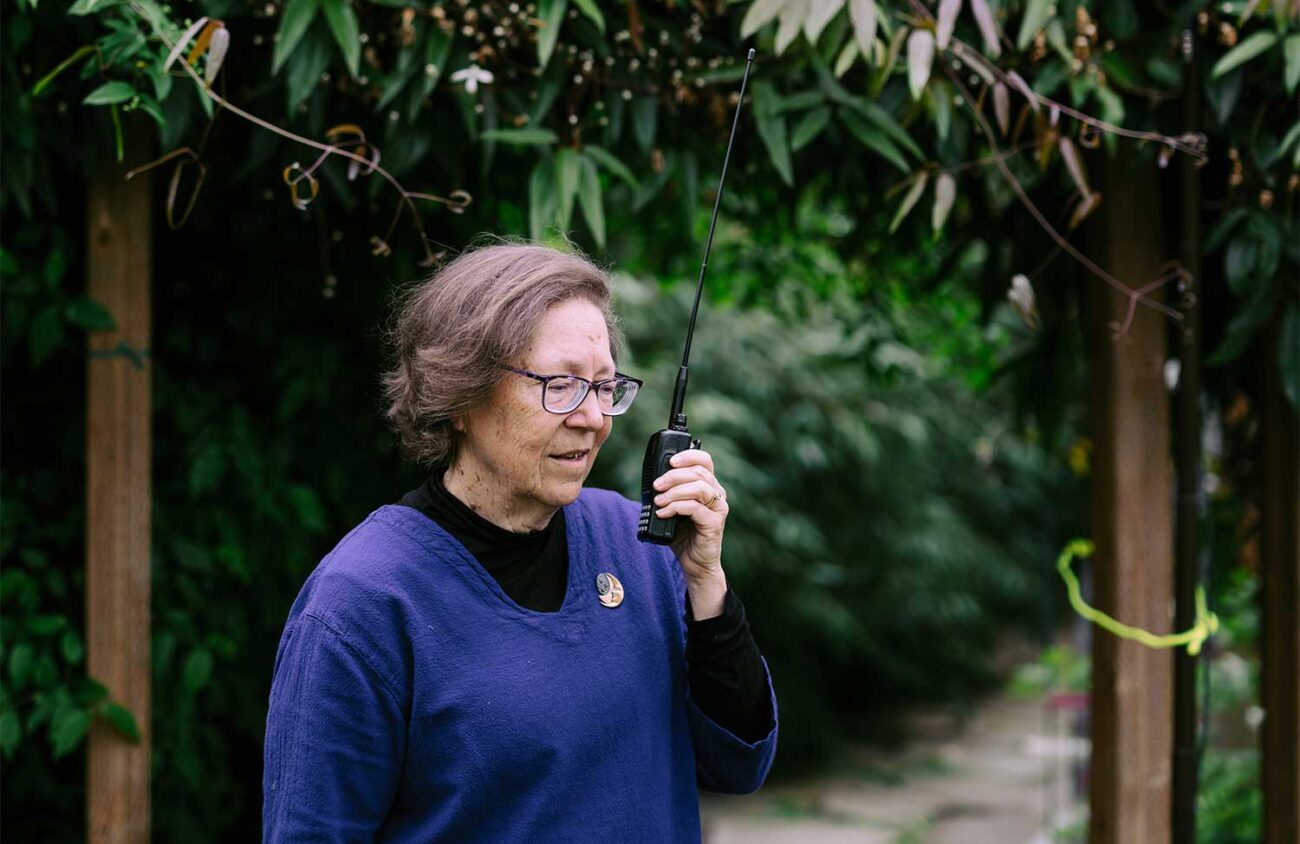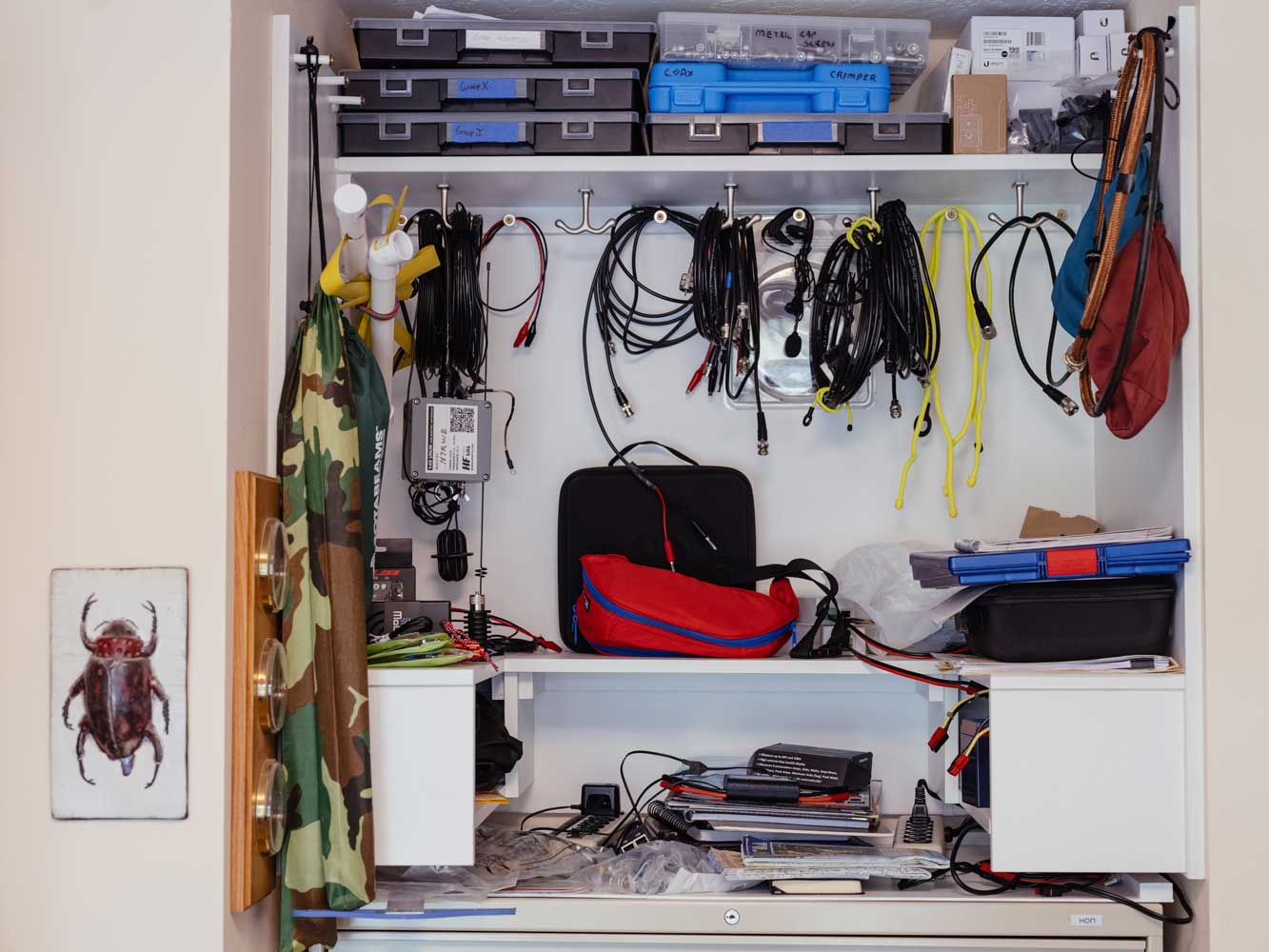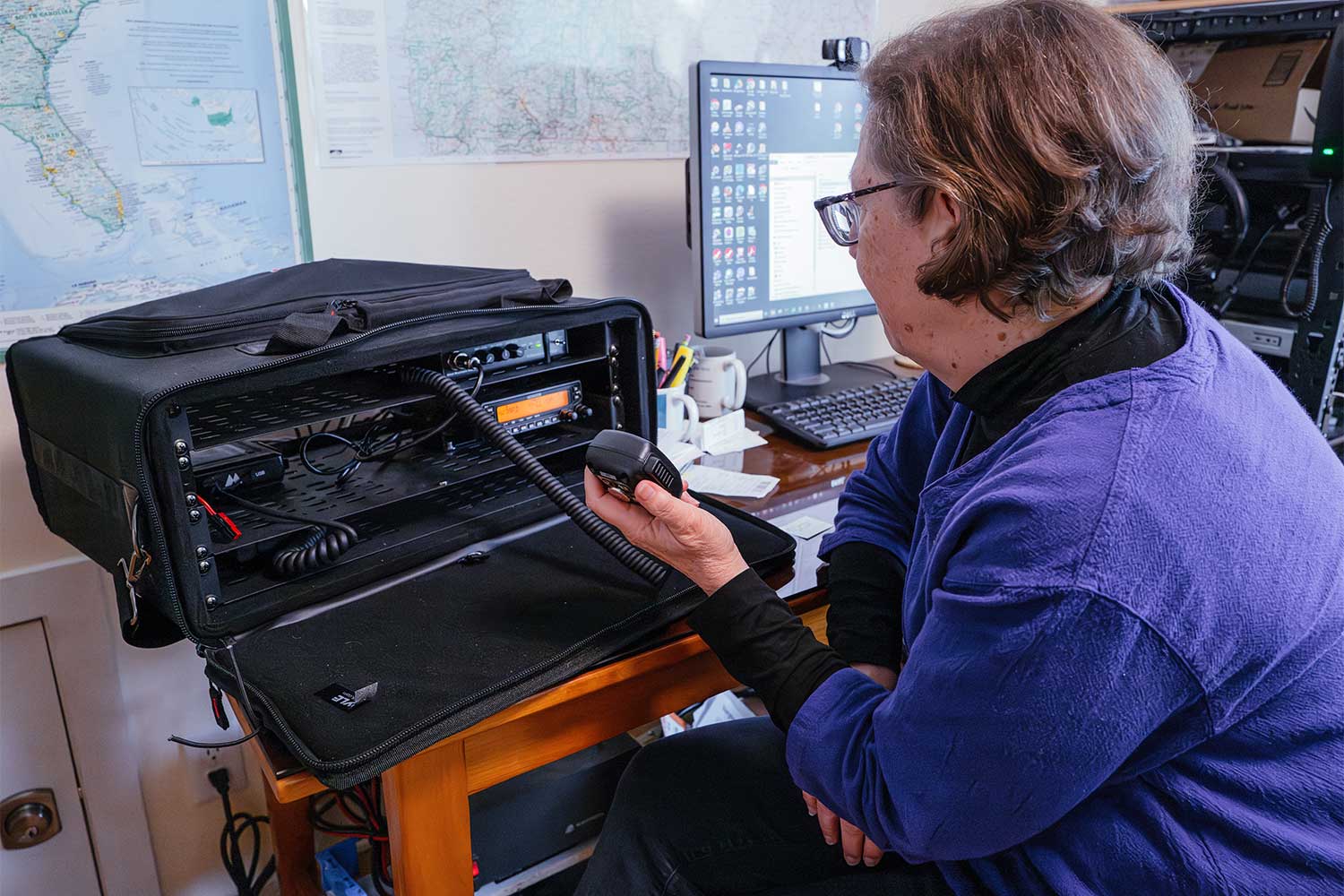I want to touch the moon.
OK, not actually. Not a hand-print-in-moon-dust kind of touch. I want to use the moon to bounce a radio signal from me to someone in Switzerland.
Up until a year ago, I didn’t know this was a thing that could be done, and I had no idea that I would want to do it. Then I got an amateur radio license, also known as ham radio. Now I am on a steep learning curve in the art and practice of ham.
I am not the usual ham operator. I lack all the expected talents and skills. I never took apart a clock or a phone or a radio as a child. I am not technical. Black boxes with numeric displays, bristling with buttons and knobs and wires going everywhere, make me anxious. I am a word person. I like poetry and gardening and the night sky and big trees. Someone else has to figure out what is wrong with my computer or my phone or my TV.
But I am married to a guy who does like things with tiny connections, who does take things apart and does put them back together. A ham operator, he volunteers on our neighborhood’s emergency preparedness communications team and is a member of the local amateur club. So when he suggested I might like amateur radio, or at least find it useful, I thought, “Well, maybe,” and began studying for the easiest of three tests that constitute the entry point into the ham world.
Amateur radio has been around about as long as radio itself, with amateurs in the late 19th century quickly embracing Guglielmo Marconi’s new wireless communications device. By 1908, students at Columbia University in New York had founded the first amateur radio club. As governments increasingly used radio for both military and bureaucratic purposes, amateur operators — some say they are known as hams because of their “ham-fisted,” or unskilled Morse Code transmissions — saw their allocation of radio frequencies constrained. Today the Federal Communications Commission oversees amateur radio, issuing 10-year licenses that operators receive after taking a test that confirms their knowledge both of basic electricity and radio operations, and also of the communications regulations for what is essentially a public square on the airwaves.
While people with more knowledge can pass the amateur radio test with a little study, it took me six months of daily study and a 16-hour course to pass the test.
Now I’m in deep.
Two things:
First: Wanting to bounce a signal off the moon, with my current knowledge and skill, would be a little bit like a land-bound couch potato waking up one morning and saying, “I think I’ll buy a boat and sail around the world.” I mean, right now I can barely talk to someone in Corvallis on my radio. The moon is 240,000 miles away and radio signals diminish as they travel. To reach and bounce back from the moon, a radio signal has to travel almost half a million miles. It’s hard because the moon is far and doesn’t have great reflective qualities — less a satellite dish and more a big pile of rocks.
Second: Ham radio is not the fading hobby of a bunch of guys who were born in the 1940s that I thought it was. It’s vibrant, with more and more people getting involved and a surprising variety of ways to participate.
Back in the 1950s, the U.S. had about 140,000 licensed hams. Today, 763,000 U.S. residents are licensed to use the airwaves the FCC has set aside for amateur use.
Ask some of the people who’ve been licensed for decades about why this is, and the answers are varied. Maybe it’s that the gear has improved to the point that someone like me could actually consider a moon bounce as doable. Maybe the COVID lockdown encouraged people to find additional ways to communicate. Maybe natural disasters like catastrophic floods, forest fires and tornados have prompted more people to expand their preparedness strategies.
Riley McLean, who’s been president of the Valley Radio Club in Eugene for 20 years, says the club’s membership has had both peaks and valleys, but has been growing steadily in recent years. He thinks the FCC’s 2007 decision to stop requiring new licensees to know Morse Code dropped a significant barrier for people seeking a license. But really, he says, there are about as many reasons as there are people.
The hobby is thriving in Oregon, with 20,823 licensees statewide. The Eugene-Springfield area — with 2,063 licensees — is blessed with one of the largest and most active radio clubs in the state, which also ranks among the oldest continuously operating clubs nationwide, founded in 1929.
Every day of the week, the Valley Radio Club sponsors a group radio event called a “net,” essentially a moderated conference call on a specific radio frequency.
The great thing about these nets is that they give newcomers like me an opportunity to overcome shyness and insecurity by providing a place to both learn and practice. A brief example of my first foray onto the air:
Ham radio net control: “Newly licensed operators, come now with your call sign.”
Me (holding down the push-to-talk button): “Um, um” (forgetting my brand new call sign but holding down the PTT key blocking anyone else from speaking), “Um, kilo seven, um kilo seven Quebec, um, papa, um Zulu.”
HAM radio net control: “Welcome K7QPZ. We’re glad you’re here!” (said with great enthusiasm). “What kind of radio are you using?”
Me: “Um, my husband’s?” (said with great uncertainty).
Ham radio net control: “Welcome! We’ll let you off the hook for tonight.”
That little exchange occurred last January, but things have improved since then.
Here’s me on the net this month:
Net control: “Would anyone like to share their experience on the simplex band today?”
Me. “This is K7QPZ. I’m on my Yaesu FT-60 with a J-pole antenna on a 19-foot mast.”
Net control: “Good job, K7QPZ!”
Translation: The Yaesu FT-60 is the handheld radio, the J-pole antenna is an omnidirectional transmitting antenna, and the mast is just a telescoping pole holding up the antenna.
It continues to surprise and please me that ham operators with decades of experience will join these nets and patiently help us newcomers get to our next level.
Ham radio gives people many different options for participation.
Neighborhood emergency preparedness volunteers set up remote stations once a month to practice and ensure their gear is functional and their operators versed in emergency communications protocols.
Some operators help runners by volunteering to work on remote long-distance races like the Waldo 100K, providing support at the aid stations along the route. Because there’s no cell service in the area, radio operators transmit runners’ times as well as coordinating with other aid stations to ensure no one goes missing along the way.
But it’s not all community service.
Hams hold contests to see how many other hams they can communicate with in a given time period.
Some people seek to keep Morse Code alive, by communicating with the short and long blips that once represented a key communication language.
Some people participate in Parks on the Air, or Summits on the Air, with operators transmitting from parks or mountain tops and people at home stations listening for and confirming their signals.
Some people want to log contacts from around the world. Some people want to talk to astronauts at the International Space Station (where there is a radio and most astronauts are licensed) or bounce a signal off a satellite.
Some people like to use the environment — hills or mountainsides, for example — to bounce a signal surprising distances.
Some people bring their computers into the act, linking radios and software that opens a dizzying range of communication options.
And some of us, well, we’ve got our eye on a moon bounce.
There are two local opportunities to see amateur radio operators in action. The Valley Radio Club has set up an amateur radio station at the Eugene Science Center, staffed with a licensed operator happy to show visitors how it’s done.
And in June the Valley Radio Club will participate in Field Day, along with thousands of other operators throughout Canada and the U.S., in a kind of international open house where members of the public can see for themselves the continuing allure of amateur radio.
Who knows? Another liberal arts major out there might start looking at the moon in a whole different way.
For more information:
American Radio Relay League: ARRL.org
Valley Radio Club: ValleyRadioClub.org
Field Day: June 24-25, Jasper State Park, ValleyRadioClub.org/field-day
Susan Palmer, K7QPZ, is a Eugene journalist with a technician license. For more of her writing visit SusanPalmer.org.


